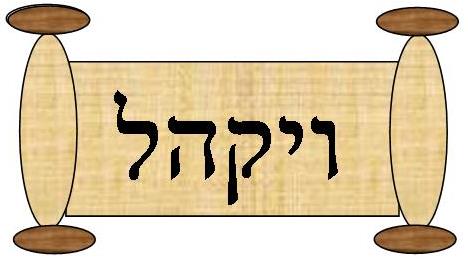In this week’s Torah portion, we are commanded again to keep the Sabbath day. The Torah states:, “Work shall be done for six days, but the seventh shall be holy to you – a Sabbath of strict rest to God.” (Exodus 35:2) The late Rabbi Joseph Salant in his work, Be’er Yoseph, finds these opening verses rather problematic. The object here is to inform us that work must not be performed on Shabbat. Why then, is it necessary to state first that work may be done for six days? Surely, it is the cessation from work which is the really important point? Rashi, however, explains that the reference to work refers to the building of the Tabernacle. The Israelites must be occupied with its construction for six days but, on the seventh, all activities must cease.
The Talmud in Shabbat (49b) explains that all the activities which are forbidden on Shabbat are derived from the work in the Tabernacle. For example, dyes were needed to color the special curtains and hangings. They were obtained from plants which were sown and reaped for this purpose. Since all these activities had to stop on Shabbat, we therefore understand that all sowing and reaping is forbidden.
The Midrash Tanchumah explains how the various items of the Tabernacle remind us of God’s work during the six days of Creation. Rabbi Emanuel Levy lists them as follows: FIRST DAY – God created heaven and earth, as the verse in Psalms attests: “spreads out the heavens like a curtain” (104:2). Similarly, special skins were spread over the Tabernacle like curtains. SECOND DAY – God made a division between the upper and lower water. Similarly, the special curtain known as the Parochet divided the Holy of Holies from the Tent of Meeting. THIRD DAY – The waters which initially covered over the entire earth were gathered together, thereby revealing dry land. Similarly, the Tabernacle contained a special basin, the kiyor, which was designated for holding water and from which the kohanim washed their hands and feet. FOURTH DAY – God created the sun and the moon which shed light upon the earth. Similarly, the seven branched Menorah cast rays of light in the Tabernacle. FIFTH DAY – Fowl were created and certain species were also offered up as sacrifices in the Tabernacle. SIXTH DAY – Adam was created. “Adam” is also a general name for mankind and on certain occasions the Kohen Gadol (High Priest) is also referred to in the Torah by this name. The work involved in manufacturing the Tabernacle, therefore, served as a “blueprint” and a reminder of how God created the world.
The Talmud takes this concept even further. Bezalel, the chief architect of the Tabernacle, who “knew thoughts”, is actually accredited with knowing the letters of the Aleph-Bet which God used in creating the world (Berachot 55a). With this specialized knowledge he was thus able to create the Tabernacle, a task which was equivalent to the creation of the universe.
Rabbi Levy concludes that one can now understand why we must learn the forbidden acts of Shabbat activity from the Tabernacle and not from a general list. By finding the source of all these activities in the Tabernacle we become ever conscious of God’s creation of the world and are brought to a higher state of awareness of the Divine origin of all life forces.
Prepared by Devorah Abenhaim







